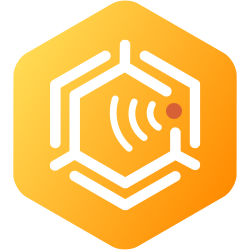Questions and answers
If you encounter any problems, please read the below FAQ for quick problem solving. If you can’t find the answers you need please contact support at support@beescanning.com with a short description of your issue and your Client-ID. The ID is located at the top of the apps main menu.
PERFORM YOUR FIRST BEESCAN
Start the app, create an apiary and a hive and press “Analyze”. Photograph your bees on the comb. Don’t photograph the entire comb with just one picture – instead take 4 pictures for each side, 8 in total, depending on comb size. Hold your camera steady and focused at around 8 inches or 21 cm from the bees.
Press “Analyze” again and wait for the app to upload the images, analyze them with AI and return with your result. If you have weak reception, just upload the photos when you get a better signal.
HOW DOES THE APP FIND HIDDEN MITES?
The game changer with our patented technology is the way the AI manages to calculate for hidden mites and present actual infestation level results even though there are mites hiding under the bees. We have done extensive field tests comparing how many mites are visible to the hidden ones. We did this by analyzing 1000 colonies with BeeScanning and then analyzing the same colonies with alcohol wash. We found that there is a correlating factor and we use that inside the app to present the actual infestation.
WHAT ABOUT THE SILHOUETTE BEE?
The silhouette bee helps with optimal photo distance. Move your camera to sync the silhouette with the size of the actual bees to optimize your picture for analyzing. A distance between phone and bees of approximately 20-25 cm or 7.8 to 9.8 inches ensures good image quality.
HOW MANY IMAGES SHOULD I TAKE PER HIVE?
– You want to include between 3000 to 6000 bees per analyze.
– This usually means bees from 3-4 brood frames per hive.
– Take 3-4 images on each side of the brood frames, 6-8 in total.
– You need about 20 images (if few bees, take more pictures) per analysis.
HOW SHOULD I TAKE THE PICTURES
The better the quality of your pictures, the better our AI performs. Here are a few guidelines to ensure good image and analysis quality:
– The images needs to be sharp.
– Avoid overlapping images.
– Try to avoid side light as it creates shadows and contrasts.
– Take the picture from about 20-25 cm or 7.8-9.8 inches from the frame.
– Take as many images as you need (from the correct distance) to cover the entire frame without overlapping (usually 3-4 on each side of the frame).
HOW DO THE APP COUNT VARROA INFESTATION LEVELS?
Varroa infestation is the number of mites divided by the number of bees. In a sample with 3 mites on 300 bees that would equal 3/300 = 0,01 = 1%. That is the number of phoretic mites, (mites on bees, not in the brood) detected in the images in relation to the number of bees. The infestation level is then multiplied with a factor. This factor derives from extensive field tests and comparative studies between the BeeScanning method and alcohol wash and reflects the ratio between observable and actual number of varroa mites.
WHAT IS BROOD DISORDER – ”bd” IN THE ANALYSIS RESULT?
While scanning for varroa we also analyze the brood and any signs of disorders. Our AI has been trained on American and European foul brood, sac brood, chalk brood and cell lids with abnormal openings. Our concept of “bd” means both the illnesses mentioned above caused by bacteria, fungus and viruses but also any visual abnormal cell capping. This may be due to bees decapping cells where varroa is detected or dead brood caused by chill.
Whatever the reason for bd it should be noticed as a strong sign that calls upon urgent examination to clarify the cause. We have found that our AI reports at a level that makes it very reliable finding disorders even though it may indicate the finding with confidence as low as 10%. We have decided to show the user even low confidence objects and let our users decide how to interpret and act.
WHERE ARE THE ANALYZED IMAGES STORED?
Images are stored on our servers and/or in the cloud.
You. We own the rights to use them according to your agreement in Terms of Service.
WHAT IF I LOSE MY PHONE?
Your images may be recovered from the server. And will show up once you log in to your account.
THE GLOBAL VARROA HEATMAP
The apps varroa map shows the latest results of performed analyzes within the app. To protect our users’ locations, the ability to zoom in has been limited.

